SCHEDULE YOUR CONSULTATION
HIPAA Privacy Policy
Platelet-Rich Plasma
If platelet-rich plasma (PRP) has been recommended for you, you can find answers to any questions you may have.
-
What is platelet-rich plasma (PRP)?
Your blood is made of 4 different parts: liquid plasma, platelets, and red and white blood cells. PRP is plasma with many more platelets than what is typically found in blood. To develop your PRP preparation, your blood must first be drawn. The platelets are separated from other blood cells and their concentration is increased during a process called centrifugation. This PRP is then readministered by your physician as part of your care.
-
What is PRP used for?
Your healthcare prvider with explain the goal of using PRP.
-
How is PRP produced?
- Your healthcare provider will draw a small amount of your blood
- Your healthcare provider will spin your blood in a machine, called a centrifuge, to separate the plasma which contains the concentrated platelets (PRP)
- Once your PRP is prepared, it is readministered by your healthcare provider
-
What are the advantages of the RICHPLAT ORTHO PRP System?
- Uses a very small amount of whole blood - about 3 and a half teaspoons
- The centrifuge process takes just 8 minutes, so your PRP is quickly produced
-
Are there any risks with PRP?
Common risks of a blood draw include:
- An allergy (hypersensitivity) to any of the PRP system's components, or if you have an active infection
- Possible adverse reactions, including damage to blood vessels, blood collecting outside of a blood vessel (hematoma), nerve damage, delayed wound healing, or infection associated with blood draw. Ask your healthcare provider about any other potential risks
-
What should I do or look after I receive PRP?
As with any procedure that involves a blood draw, tell your healthcare provider if you notice signs of infection where your blood was collected (including redness, swelling, or soreness), as well as any unusual bruising, tingling, numbness, or any other signs your healthcare provider tells you about
Understanding OrthoBiologics:
OrthoBiologics are nature substances such as cells, tissue, blood component, and growth factor that are harnessed to aid in the treatment of orthopedic conditions, such as osteoarthritis, or ligament and tendon injuries. They may be used to replace lost tissue, stimulate regeneration and healing, reduce pain and inflammation and improve joint function, and they can be administered as an office-based treatment, in the form of an injection, or at the time of surgery.
Research is ongoing, but OrthoBiologics have been found to improve symptoms and surgical outcomes in clinical trials and practice, as they function like "Biologic Pharmacies", delivering nutrients, growth factors, and various biologic molecules to a site of degeneration, injury, or surgical repair.
It is important to understand that OrthoBiologics are not necessarily related to stem cells, nor are they regenerative in nature; it is the growth factors, and not the cells themselves that impact inflammation and healing.
Platelet Rich Plasma (PRP) is obtained from the patient's blood after it has been processed to concentrate platelets and certain white blood cells that enhance healing and reduce inflammation. PRP may be injected directly into the damaged tissue during an out-patient procedure at the time of, or following repair surgery. PRP does not increase surgical time, prolonged recovery, or require extra sutures.
Contact our office to learn more or to book your appointment.
Business Hours:
- Mon - Thu
- - -
- Friday
- -
- Sat - Sun
- Closed
